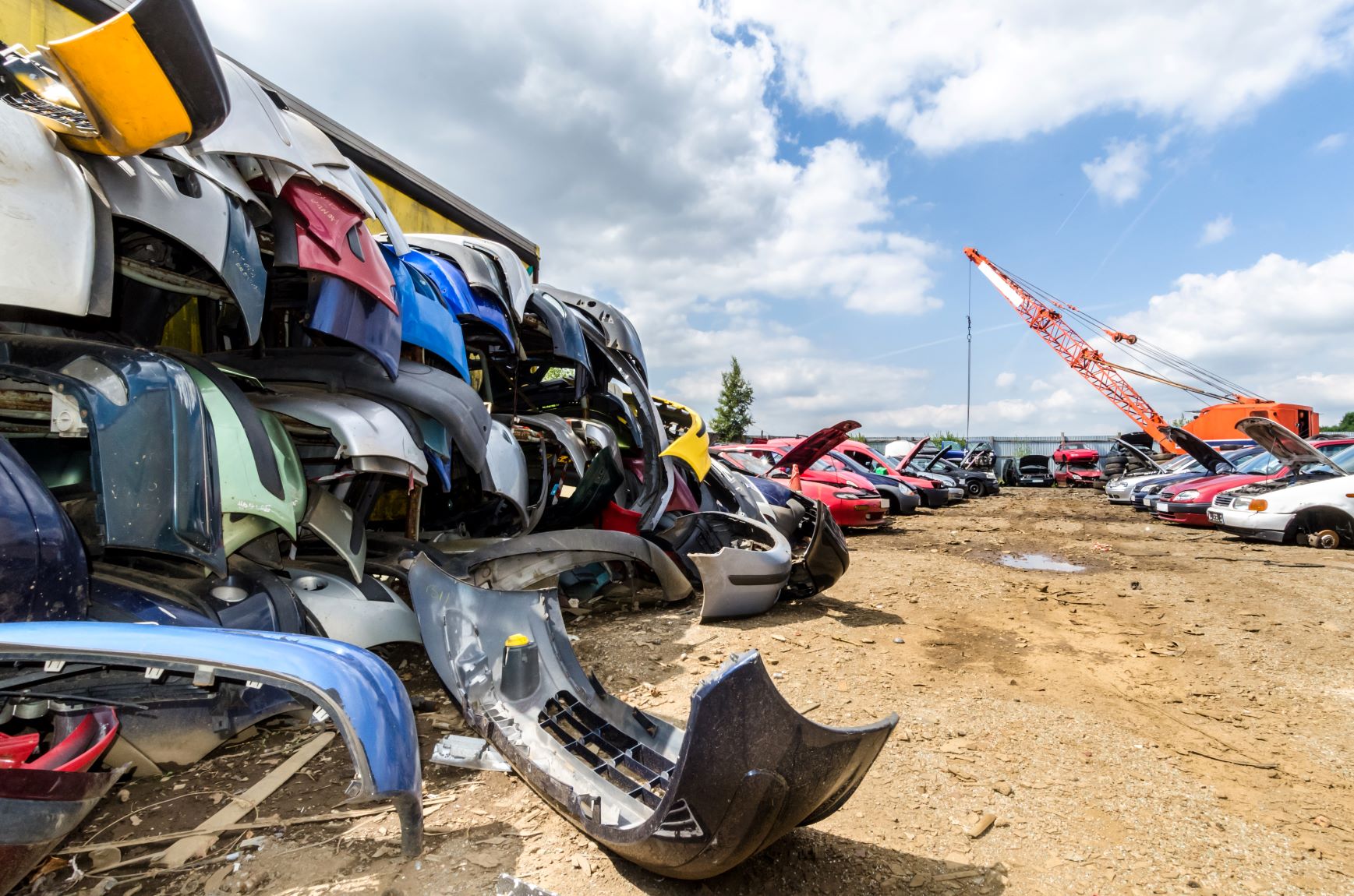
When a vehicle has turned over its last tick on the odometer and is unequivocally and permanently out of commission, more often than not, it means scrap yard purgatory is its impending final destination. Every year, more than 12 million automobiles are scrapped, and unfortunately (unlike the lucrative business of metal recycling) plastic bumper recycling is not yet commonplace.
But things are starting to change.
In scrapping a vehicle, any viable parts will first be removed and potentially resold at some point down the line. Metal components like the body and frame can be highly profitable for metal recyclers and those parts will eventually be melted down and repurposed. Until relatively recently, the automotive plastics and other undesirable leftovers would be crushed into a block and relegated to a landfill to decompose over the course of the next several millennia. Not a pretty picture.
Now you’re probably thinking, “wait, I thought plastic was recyclable”. And you’re not wrong. Plastic bottles, milk jugs, food containers, and things of that nature absolutely are. However, automotive plastic–like what your bumper is made of–is a little different. Unlike a soda bottle, bumpers are comprised of around 20 pounds of plastic infused with a rubber-like polymer and other additives which add strength and durability. And while this might be great for protecting you in a crash, it historically hasn’t been much of a benefit in terms of producing viable recycled products. Separating the reusable plastic from the other “stuff” has typically been deemed more trouble than it’s worth and not an economically sound process for recycling companies.
But that was then. This is now.
Given that it’s impractical and potentially dangerous to resell and reapply a used fascia (most auto body shops don’t do it anyway), the only way to repurpose a vehicle’s bumper in a practical sense would be to shred it down and recycle it. And thanks in large part to a successful multi-year project spearheaded by the Plastics Industry and known as the End-Of-Life Vehicle Recycling Demonstration Project, manufacturers are finding new ways to utilize shredded or pelleted fascias and automotive plastics. Tests revealed that the nature of the shredded or pelleted material could actually be more beneficial than virgin plastic to certain industries in select applications.
Of course the million dollar question is: Which ones?
That question hasn’t yet been answered to the point that would put recycled bumper plastic in high demand by any means. Although experts predict that due to the durable nature of the recycled bumper material in comparison to solid plastics, the material could be used in a variety of consumer products, decorative products, seasonal items, and construction materials. A hopeful sign of things to come, one auto manufacturer has already found a way to incorporate the material in its production of automobile mud flaps.
What does all this mean? In simplest terms, while the technology exists, the future of plastic bumper recycling is still dependent on finding an applicable end-market. Basically, if manufacturers can find sustainable and economical uses for these materials, millions of bumpers can be spared from landfills each year. In newer vehicles (which are hopefully still years away from meeting their junkyard demise) upwards of 95 percent of automotive materials are recyclable. And engineers and manufacturers are working diligently to bring these percentage even higher every day.

